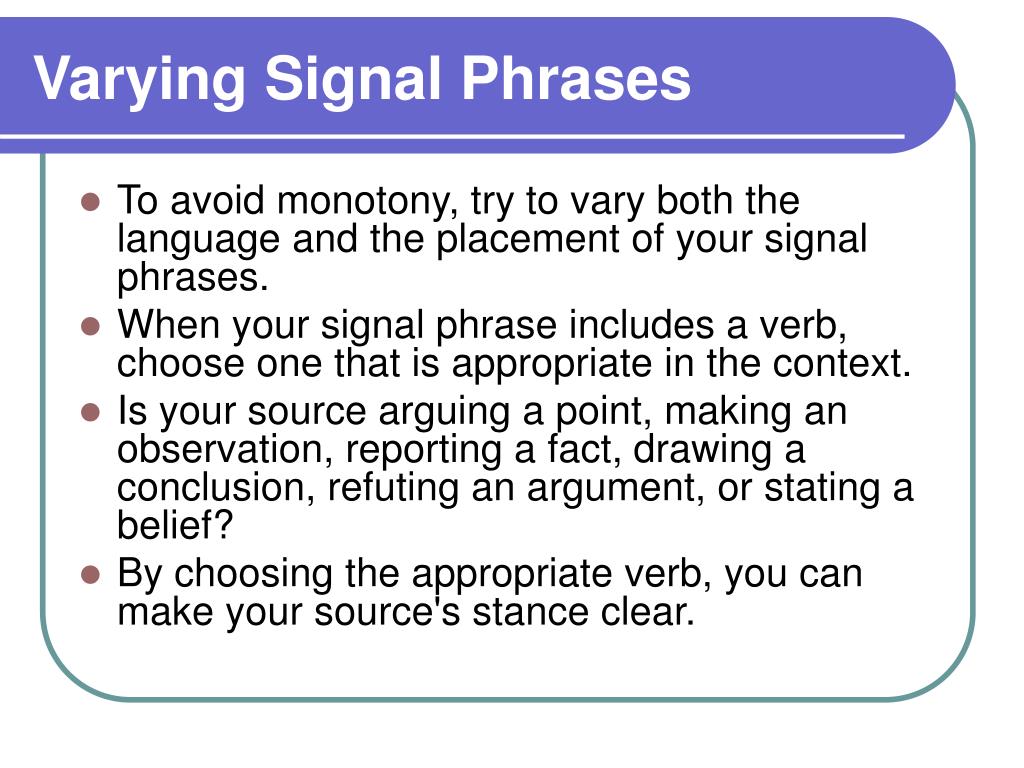

It is relatively simple to use a wide variety of different expressions to introduce both direct and indirect citations. In most citation styles, including APA, MLA, and Chicago style, you can add variety to your research writing by not always using the same sentence structure to introduce quotations, paraphrases, or pieces of information borrowed from different sources. Use of this site constitutes acceptance of our terms and conditions of fair use. This material may not be published, reproduced, broadcast, rewritten, or redistributed without permission. Writing Letters of Recommendation for StudentsĬopyright ©1995-2018 by The Writing Lab & The OWL at Purdue and Purdue University.For example, if you incorrectly cited Samuel Johnson in the above example, yet you have Boswell listed on your Works Cited page, then your readers will be unable to reference the Johnson quote.At all times, the author named in your parenthetical or signal phrase must correspond to the author named in your Works Cited page citation.Making parenthetical and Works Cited page citations work together: Samuel Johnson admitted that Edmund Burke was an “extraordinary man” (qtd.How would you properly compose your parenthetical? Like so: Perhaps Boswell quotes Samuel Johnson’s remarks about Shakespeare, and you want to quote Johnson. What if you are reading an article about Edmund Burke, written by a writer named Boswell.

“Poets,” according to Shelley, “are the unacknowledged legislators of the world” (103-04).Shelley thought poets “the unacknowledged legislators of the world” (794-95).Īnother example of a quotation that is an integral part of the sentence structure:.Quoted material is usually preceded by a colon if the quotation is formally introduced and by a comma or no punctuation if the quotation is an integral part of the sentence structure.Įxample of a quotation that is an integral part of the sentence structure:.If your signal phrase does not include the author’s name, then the pages number(s) and the author’s last name go inside the parenthetical.If your signal phrase includes the author’s name, then only the page number(s) go inside the parenthetical.Although this is a simple revision tactic it is very effective, and will help to turn a somewhat tedious prose style into an interesting one.Īcknowledges, adds, admits, agrees, argues, asserts, believes, claims, comments, compares, confirms, contends, declares, denies, disputes, emphasizes, endorses, grants, illustrates, implies, insists, notes, observes, points out, reasons, refutes, rejects, reports, responds, suggests, thinks, writes. If you discover that your favorite signal phrase verb seems to be “suggests,” then edit your paper by varying the verb. The signal phrase often proves to be an instance where this repetitiveness occurs.ĭetecting the problem through proofreading and editing:Īfter you have a rough draft of your paper check all your signal phrases. In other words, writers find words and phrases that become favorites, and develop a tendency to use them frequently. The examples above are both fine signal phrases, but a research paper that contains many in-text citations can become rather tedious to read if every quotation is introduced in the same manner, for all writers tend to develop their own particular writing style habits. The two most common and scholarly signal phrases are “Smith suggests that.” and “Smith argues that.”



 0 kommentar(er)
0 kommentar(er)
